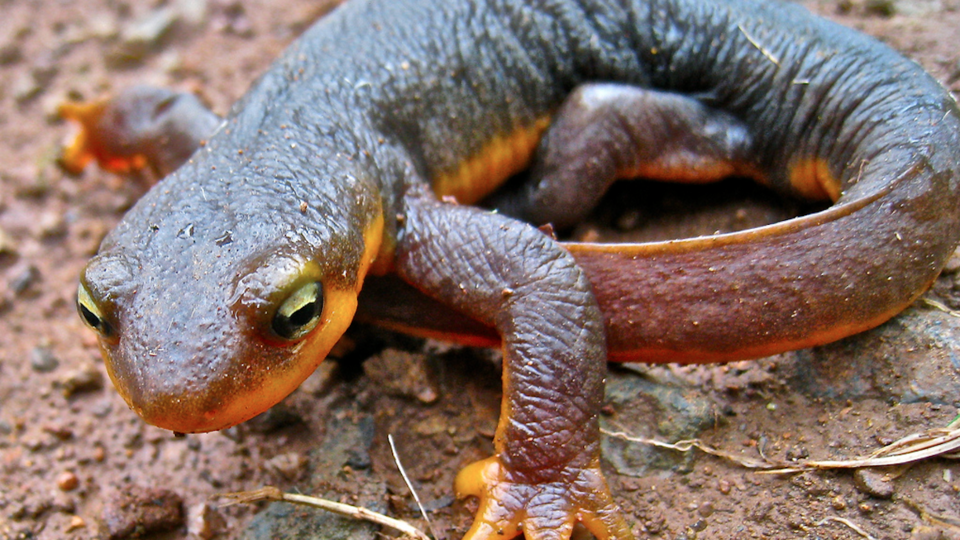Science News
Deadly Salamander Fungus

Over a year ago, we reported on a newly discovered chytrid fungus called Batrachochytrium salamandrivorans, or Bs. A relative of the fungus that’s decimating amphibians worldwide, Bs targets salamanders, and appears to be just as deadly.
The paper that described the new fungus last year also detailed that the pathogen had already wreaked havoc in northern Europe, reducing the Dutch population of fire salamanders to less than 4 percent of its original size—leaving around 10 individuals total.
Lead author An Martel, of Ghent University in Belgium—where salamander declines due to Bs are also occuring—hasn’t rested since that publication. Last week, she and her colleagues published a new paper in Science, further describing the origin, spread, and potentially destructive future of the fungus.
The new study demonstrates that the fungus probably originated in southeast Asia 30 million years ago and reached Europe through the international trade in Asian newts (aquatic salamanders), which are popular pets.
While the fungus has not been seen beyond northern Europe and Asia—where some salamanders test positive for the fungus without ill effects—the scientists wanted to test the susceptibility of other amphibians to Bs. They discovered that the pathogen is lethal to at least a dozen European and North American salamander and newt species, but does not affect other amphibians like frogs and toads.
Co-authors Karen Lips and Carly Muletz of the University of Maryland say it may only be a short time until the fungus’s affects are felt on this side of the globe. “It’s a question of when, not if, this fungus reaches North America,” says Muletz. North America is the global center of salamander biodiversity, home to more than 150 of the world’s 655 known salamander species.
Salamanders are crucial to the health of ecosystems and the environment, according to a 2013 paper. And species like the rough-skinned newt (Taricha granulosa)—a close relative to the newts found in Tilden Park—are especially vulnerable. The new study shows a 100 percent mortality rate for these iconic species.
“We have billions of these newts living in the wild all across the continent,” says Lips, “and because they’re highly sensitive to this fungus, they could amplify it or spread it to other groups of salamanders. We don’t know what the consequences of that might be.”
Screening imported animals for the pet trade is essential, says Lips. She believes that scientists can act now to track, and ideally prevent, a disease outbreak from ravaging wild populations of newts and salamanders in the Americas. Current U.S. regulations focus on monitoring live animal imports to prevent the spread of diseases to humans and livestock, not to native wildlife, says Lips. She and other experts recently briefed Congressional staffers on the need to fill in this regulatory gap.
“If scientists and policy makers can work together on this, we have a rare opportunity to stop an epidemic from spreading around the globe with potentially deadly effect,” she says.
Image: Steve Jurvetson/Flickr